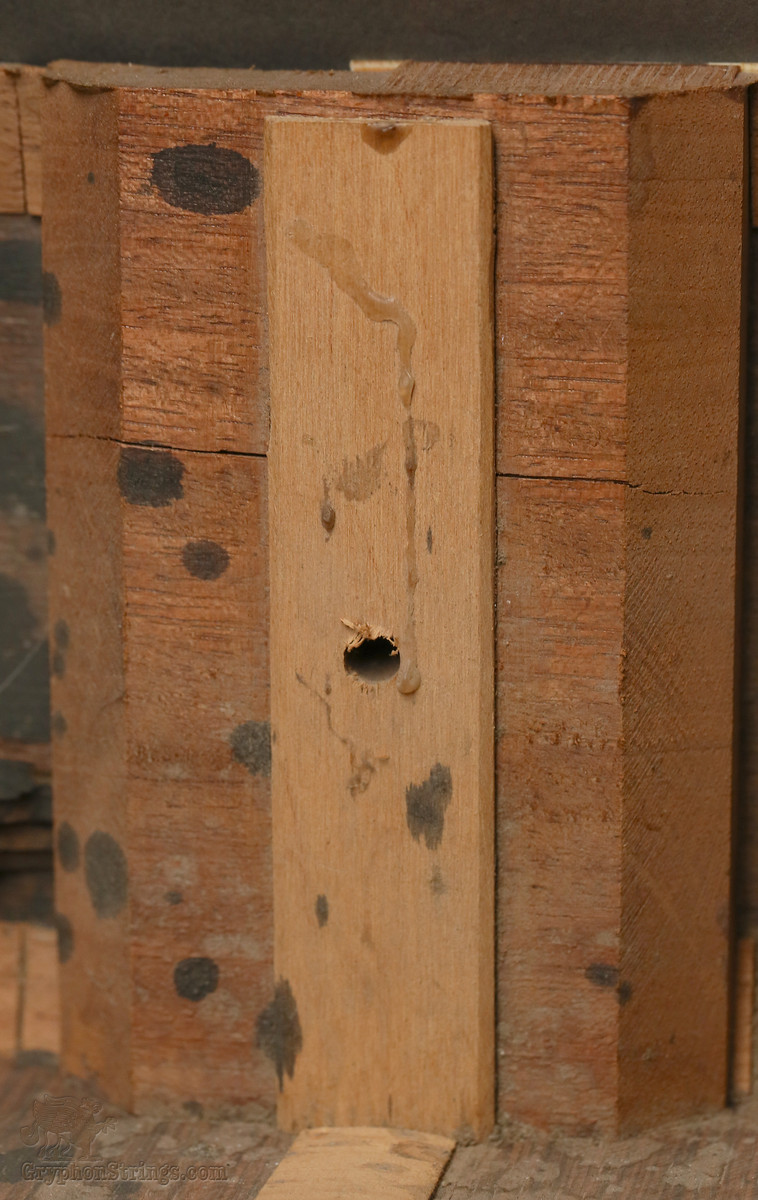1949 Martin D-28
From time to time, as I search for instruments for our Catch of the Day column, I run across an instrument that is in need of major work. These are usually described as project guitars, and in many cases they are instruments that deserve to be resurrected, but for whatever reason the person selling it can’t do the work. I thought it might be interesting to feature these instruments as they turn up. So, for the inaugural entry in the Project Guitar Project, I give you what’s left of a 1949 Martin D-28. Happily, the parts that survive are the sides and back which, being made of Brazilian rosewood, are the most desirable bits.
Click here for the original eBay listing. As of this writing, the bid is $601.
From the back, this D-28 looks to be in pretty good shape. Sure, it’s missing a neck, but for a skilled luthier that’s a minor inconvenience. The Brazilian looks a little blotchy, but the grain is nice and straight. This is the kind of wood builders and players are talking about when they say you can’t get stuff like this anymore.

Okay, now things are looking a little uglier. The seller says they bought the guitar in this condition and that the person they got from pulled the top off. Nobody knows what happened to the neck or why the interior was slopped over with black paint. The back doesn’t have any cracks, so it’s no hiding any botched repairs. I hope whoever gets this strips the paint and lets us know if there is anything cool hidden under there.

The neck block is intact and the model number and the serial number are clearly visible. Here’s a philosophical conundrum for you: If this guitar is resurrected, is it still a 1949 Martin D-28?

It looks like someone has made a head start on the repair.

Actually, it looks like the Band-Aid is holding the flakes from a side crack in place. Since the whole guitar is going to be refinished the adhesive isn’t going to be a problem.

It looks like the tail block is split. Usually this a nightmare repair but with the top off fixing this would be a piece of cake. See, there is one bright spot here.

Although removing the top could have been done very badly, it looks like whoever did it took some care with the job. Some of the kerfed linings are missing but it looks like he didn’t damage the sides. The seller says that the guitar was refinished at some point in the past and that the back and sides look like they have been thinned out a bit. They are still within usually accepted dimensions but there isn’t much more room to sand. So, is this guitar worth saving? I’d say, yes it is, if you can find a luthier willing to do the work. To see how good it can turn out, here’s a story about a Martin C-2 arctop that had its caved-in archtop replaced with a flattop basically turning the guitar in an OM-28.




